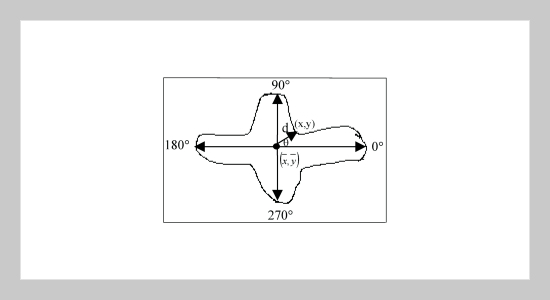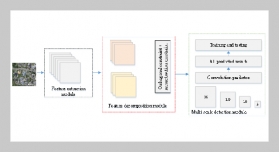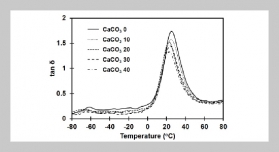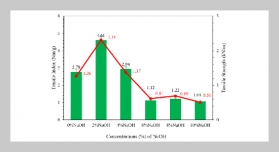REFERENCES
- [1] Zhang, D. and Lu, G., “Review of Shape Representation and Description Techniques,” Pattern Recognition 37, pp. 1�19 (2004).
- [2] Wang, T., Rui, Y. and Sun, J. G., “Constraint Based Region Matching for Image Retrieval,” International Journal of Computer Vision, pp. 37�45 (2003).
- [3] Peng, J., “Multi-Class Relevance Feedback ContentBased Image Retrieval,” Computer Vision and Image Understanding 90, pp. 42�67 (2003).
- [4] J. Shanbehzadeh, A. M. E. and Mahmoudi, F., “Image Indexing and Retrieval Techniques: Past, Present and Next,” Proceedings of the SPIE: Storage and Retrieval for Multimedia Database, Vol. 3972, San Jose, California, USA, pp. 461�470 (2000).
- [5] Chang, J. H., Fan, K. C. and Chang, Y. L., “MultiModal Gray-Level Histogram Modeling and Decomposition,” Image and Vision Computing 20, pp. 203� 216 (2002).
- [6] Brenulli, R. and Mich, O., “Histograms Analysis for Image Retrieval,” Pattern Recognition 34, pp. 1625� 1637 (2001).
- [7] Wei, H. and Yun, D. Y. Y., “Illumination-Invariant Image Indexing Using Directional Gradient Angular Histogram,” Proceedings of the IASTED International Conference Computer Graphics and Imaging, Honolulu, Hawaii, USA, pp. 13�16 (2001).
- [8] Chen, Y., Zhou, X. and Huang, T., “One-Class SVM for Learning in Image Retrieval,” Proceedings of the IEEE International Conference on Image Processing, Thessaloniki, Greece, pp. 815�818 (2001).
- [9] Mahmoudi, F., Shanbehzadeh, J. and Eftekhari-Moghadam, A. M., “Image Retrieval Based on Shape Similarity by Edge Orientation Autocorrelogram,” Pattern Recognition 36, pp. 1725�1736 (2003).
- [10] Bernier, T. and Landry, J. A., “A New Method for Representing and Matching Shapes of Natural Objects,” Pattern Recognition 36, pp. 1711�1723 (2003).
- [11] Zhang, J., Zhang, X., Krim, H. and Walter, G. G., “Object Representation and Recognition in Shape Spaces,” Pattern Recognition 36, pp. 1143�1154 (2003).
- [12] Nishida, H., “Structural Feature Indexing for Retrieval of Partially Visible Shapes,” Pattern Recognition 35, pp. 55�67 (2002).
- [13] Bonnassie, A., Peyrin, F. and Attali, D., “A New Method for Analyzing Local Shape in Three-Dimensional Images Based on Medial Axis Transformation,” IEEE Transactions on Systems, Man, and Cybernetics-Part B, Cybernetics 33, pp. 700�705 (2003).
- [14] Yushkevich, P., Fletcher, P., Joshi, S., Thall, A. and Pizer, S. M., “Continuous Medial Representations for Geometric Object Modeling in 2D and 3D,” Image and Vision Computing 21, pp. 17�27 (2003).
- [15] Ruberto, C. D., “Recognition of Shapes by Attributed Skeletal Graphs,” Pattern Recognition 37, pp. 21�23 (2004).
- [16] Lin, H. J., Kao, Y. T., Yen, S. H. and Wang, C. J., “A Study of Shape-Based Image Retrieval,” Proceedings of the 6th International Workshop on Multimedia Network Systems and Applications, pp. 118�123 (2004).
- [17] Stein, F. and Medioni, G., “Structural Indexing: Efficient 2-D Object Recognition,” IEEE Transactions on Pattern Analysis and Machine Intelligence, Vol. 14, pp. 1198�1204 (1992).
- [18] Choi, M. S. and Kim, W. Y., “A Novel Two Stage Template Matching Method for Rotation and Illumination Invariance,” Pattern Recognition 35, pp. 119�129 (2002).
- [19] Yu, K. K. and Hu, N. C., “Two-Dimensional GrayLevel Object Recognition Using Shape-Specific Points,” Journal of the Chinese Institute of Engineers, Vol. 24, pp. 245�252 (2001).
- [20] Araujo, H. and Dias, J. M., “An Introduction to the Log-Polar Mapping,” Proceedings of Cybernetic Vision, Second Workshop, pp. 139�144 (1996).
- [21] Thomas, H. C., Charles, E. L., Ronald, L. R. and Clifford, S., “Introduction to Algorithm,” 2nd (2001).
- [22] Sebastian, T. B., Klein, P. N. and Kimia, B. B., “Recognition of Shapes by Editing Shock Graphs,” Proceedings of the 8th IEEE International Conference on Computer Vision, ICCV 1, pp. 755-762 (2001).
- [23] Mokhtarian, F., Abbasi, S. and Kittler, J., “Robust and Efficient Shape Indexing through Curvature Scale Space,” Proceedings of the 6th British Machine Vision Conference, BMVC ‘96, Edinburgh, UK, pp. 53�62 (1996).
- [24] Lin, H. J. and Kao, Y. T., “A Prompt Contour Detection Method,” Distributed Multimedia Systems, pp. 439� 443 (2001).









